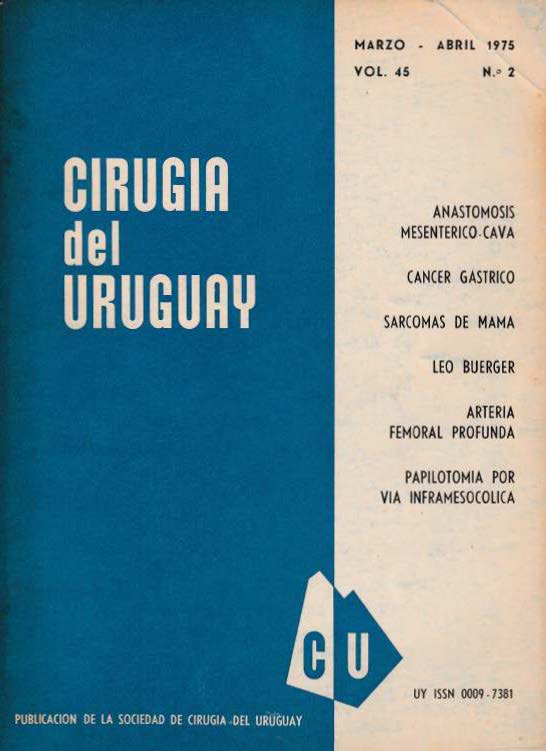Mesenteric cava anastomosis
Keywords:
mesenteric veins, vena cava inferior, surgery, hypertension, portal, portacaval anastomosisAbstract
The authors discuss the technique of meso-caval shunts in its three historical stages: first, end to-end, then, side-to-end -the latter was used in 2 cases of portal thrombosis and in 3 of cirrhosis- and finally, with an interposition "H" graft. with autogenous vein or a Dacron's prosthesis. It may be necessary in portal thrombosis of splenectomized adults or in little children with a splenic vein of less than 1 cm diameter. In cirrhosis this technique is of choice when the hepatic pedicle cannot be reached and the patient has been splenectomized or when one does not want to resect a very large and attached spleen.
The two patients with thrombosis had a satisfactory evolution and 2 of the cirrhotic ones stopped bleeding. However, all of the latter died during the post-operative course: 2 of them due to hepatic dysfunction and coma and the third one with a severe respiratory complication. In all cases they were patients of high risk, belonging to the "C" group of Child's classification.
Downloads
Metrics
Downloads
Published
How to Cite
Issue
Section
License
All articles, videos and images published in Revista Cirugía del Uruguay are under the Creative Commons CC licenses, which is a complement to the traditional copyright, in the following terms: first, the authorship of the referred document must always be acknowledged and secondly none of the article or work published in the journal may have commercial purposes of any nature. The authors retain their copyrights and give the magazine the right of first publication of their work, which will be simultaneously subject to the Creative Commons Attribution-NonCommercial 4.0 International License license that allows the work to be shared whenever the initial publication is indicated in this journal.


























